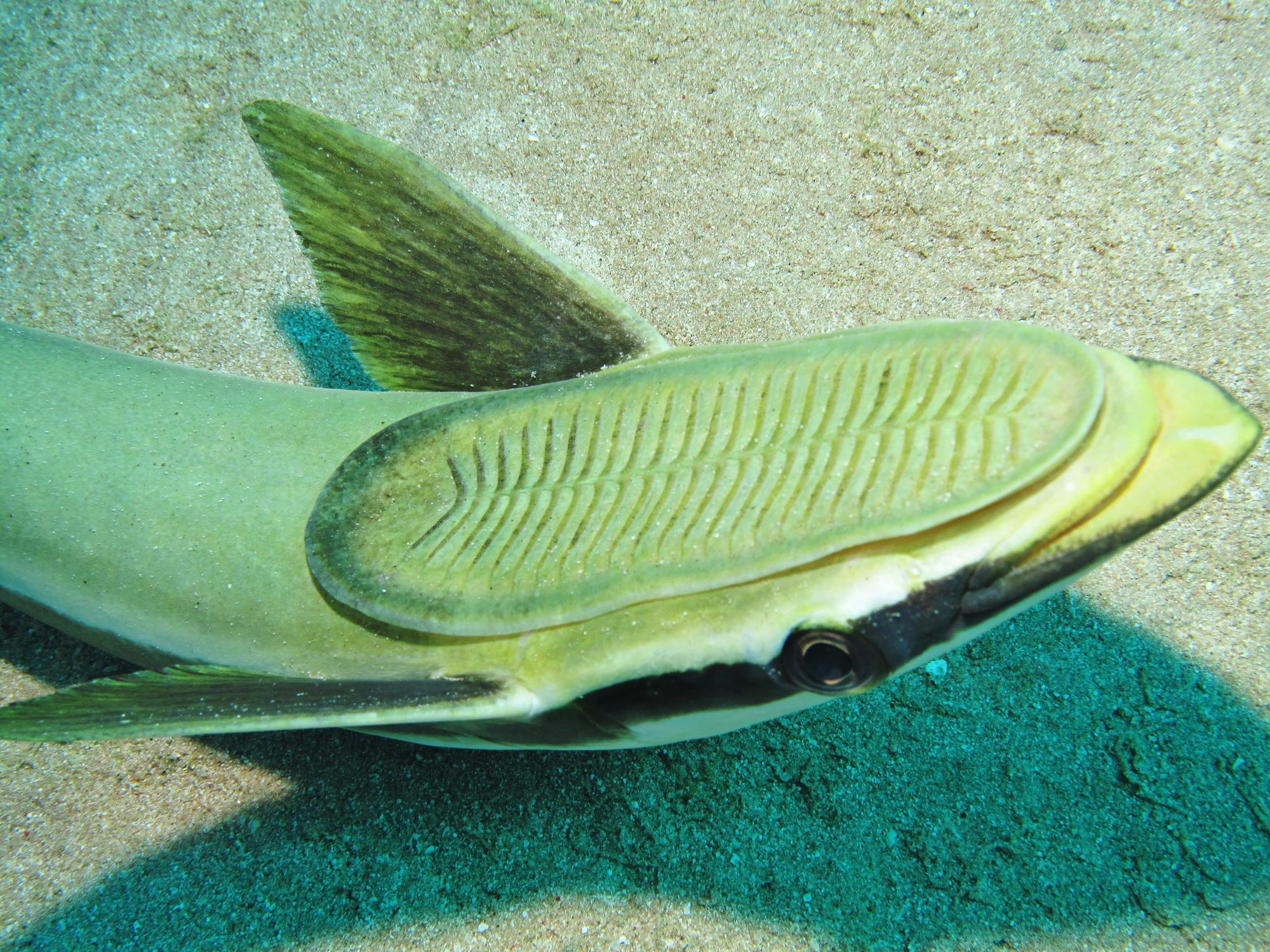While we have heard of a few aerial drones that are also able to operate underwater, a new one takes that concept considerably further. Using a fish-inspired suction disc, it can hitch rides underwater – possibly even on submarines – to save battery power.
The prototype device was developed via a collaboration between scientists from Beihang University in China, Imperial College London, and Switzerland's Empa research institute.
It takes the form of a small waterproof quadcopter, on top of which is a 3D-printed silicone disc inspired by a similar appendage on the flattened head of the remora fish. The remora uses that disc to adhere itself to larger animals such as whales, sharks and manta rays. When the host creature feeds, the remora temporarily detaches itself from them to gobble up the waterborne scraps.
Like the remora's natural disc, the drone's synthetic version isn't just one big suction cup. Instead, it incorporates parallel rows of flexible membranes, the spaces between which form individual suction compartments. For both the fish and the drone, this feature allows the disc to adhere to curved, rough, uneven surfaces, and to maintain a hold even when the entire disc isn't in contact with the surface.

The drone is capable of flying like any other quadcopter, but can also drop below the water's surface – or emerge from beneath it – in just 0.35 seconds. This is reportedly the fastest transition speed of any aerial-aquatic drone.
While underwater, the ends of the copter's propellers passively fold back, making those props more effective for propelling the craft through the water. Using an onboard camera, it can then seek out and attach itself to its target. That target could be a mobile one – such as a submarine, or a whale that's being studied – or it could be something stationary, like a pipeline or the leg of an oil rig.
"Underwater communication and signal transmission is not easy, thus [the drone] can have levels of autonomous operation underwater and in air that are guided by onboard sensors," Empa and Imperial College's Prof. Mirko Kovač told us. "One of the advantages of the ability to transition back to air is that it does not necessarily need to communicate underwater, but instead can jump out of water and send the signals with 5G or Wi-Fi networks."
As an added bonus, the copter's suction disc also works on land. This means that if it needs to loiter in one location, it can stick itself to an overhang such as the eaves of a roof, then shut off its motors until it needs to move again – it would otherwise have to hover, using up its battery power much faster.
It is hoped that once developed further, the technology could have applications in marine studies, search-and-rescue operations, environmental sensing, and industrial inspections.
A paper on the research was recently published in the journal Science Robotics.
You can see the drone in amphibious action, in the following video.
Sources: Empa, Imperial College London





